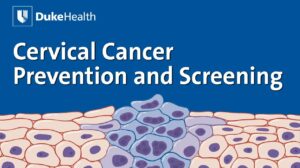NEW YORK (Reuters Health) – Revised thromboembolism guidelines emphasize the importance of thromboprophylaxis in women undergoing cesarean delivery.
For example, “ACOG is now recommending placement of pneumatic (inflatable) compression devices before cesarean delivery for all women not already receiving medication to prevent blood clots,” Dr. Andra James told Reuters Health by email.
She added, “With the release of the new Thromboembolism in Pregnancy Practice Bulletin, the American Congress of Obstetricians and Gynecologists (ACOG), is taking a more proactive approach to reducing pregnancy-related blood clots. Pregnancy increases the risk of blood clots four- to five-fold and cesarean delivery approximately doubles that risk.”
The new guidelines, which Dr. James helped to develop, will appear in the September issue of Obstetrics & Gynecology. They replace guidelines from August 2000.
Dr. James, of Duke University Medical Center, Durham, North Carolina, and her colleagues note that venous thromboembolism, including pulmonary embolism, accounts for 9% of all maternal deaths in the US.
The most important individual risk factor for venous thromboembolism in pregnancy is a personal history of thrombosis. Thrombophilia is the next most important. Other factors include obesity and hypertension.
Therapeutic anticoagulation is recommended for all women with acute venous thromboembolism during pregnancy and for those at risk. The preferred anticoagulants in pregnancy are heparin compounds, but routine anticoagulation therapy for all pregnant women is not warranted. Bleeding complications can be caused by unfractionated heparin or low molecular weight heparin, and this should be considered before initiating anticoagulation therapy.
Additional measures may be appropriate in certain high risk groups. For example, women who have antithrombin deficiency may be candidates for antithrombin concentrates peripartum.
Dr. James added in a statement that “Inflatable compression sleeves should be left in place until a woman is able to walk after delivery or-in women who had been on blood thinners during pregnancy-until anticoagulation medication is resumed.”
Nevertheless, emergency cesarean delivery should not be delayed for the placement of compression devices.
The guidelines also say that most women who receive thromboprophylaxis while pregnant “will benefit from postpartum thromboprophylaxis, but the dose and route will vary by indication.”
“Because half of venous thromboembolism-related maternal deaths occur during pregnancy and the rest during the postpartum period, ongoing patient assessment is imperative,” Dr. James said. “While warning signs in some women may be evident early in pregnancy, others will develop symptoms that manifest later in pregnancy or after the baby is born.”
Reference:
Scientific Evidence Underlying the American College of Obstetricians and Gynecologists’ Practice Bulletins
Obstet Gynecol 2011.




